2017 Honda Clarity Fuel Cell Review: First Drive

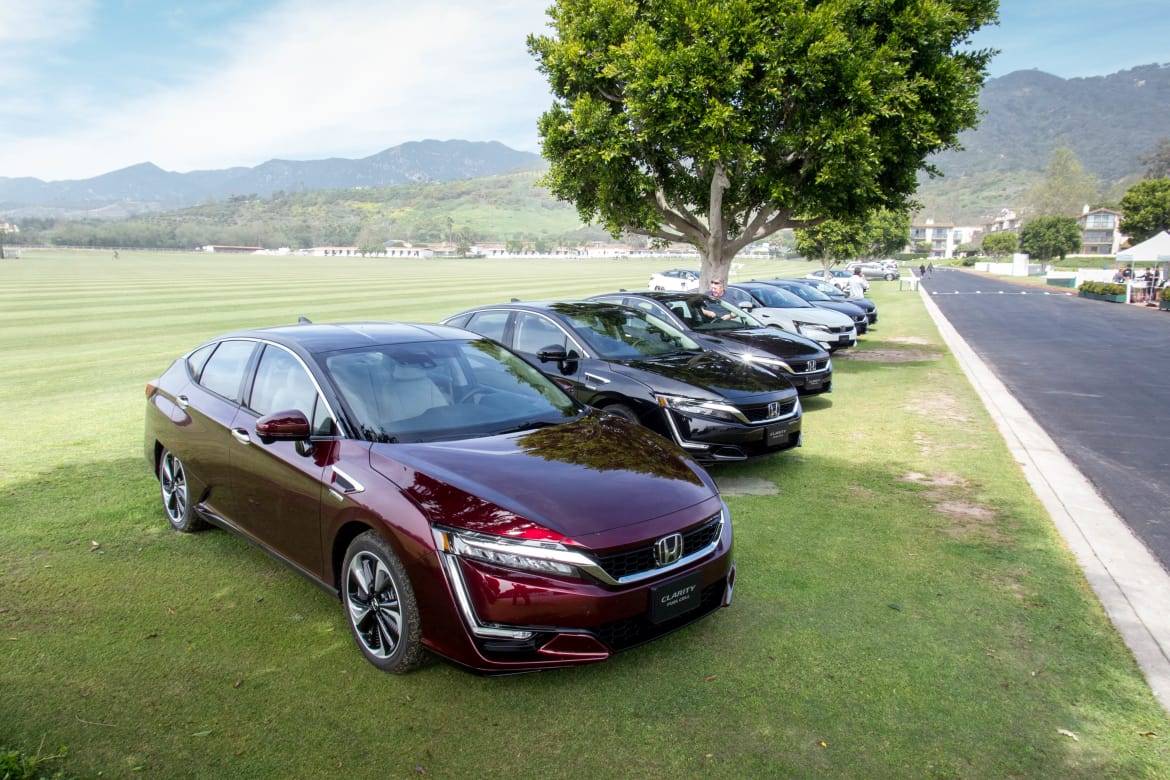
CARS.COM — When you’re driving an alternative-fuel car, there may be a moment when you stop thinking about it being an alternative. The sooner it happens, the closer that vehicle is to what most would call a “real” car. From the moment I sat in it, the 2017 Honda Clarity Fuel Cell felt like a real car — and a real Honda, right down to the almost-hidden USB ports and a touchscreen media system devoid of rotary knobs. Beyond those characteristic annoyances, almost everything about this fuel-cell-powered electric sedan was impressive, even revelatory.
Related: GM, Honda Renew Fuel-Cell Tech Partnership
The first of three Clarity models, this one went on lease last December in California only, where there are currently 27 hydrogen fueling stations and 36 more promised over the next two years. (I’ll get to the feasibility of this rare car and its rare fuel below.) Late in 2017, the Clarity Fuel Cell will be joined by the battery-electric Clarity Electric and the Clarity Plug-In, a plug-in gas-electric hybrid. All will employ an electric motor for propulsion. Only the power source varies, and with it the vehicle’s range and charging/fueling requirements.
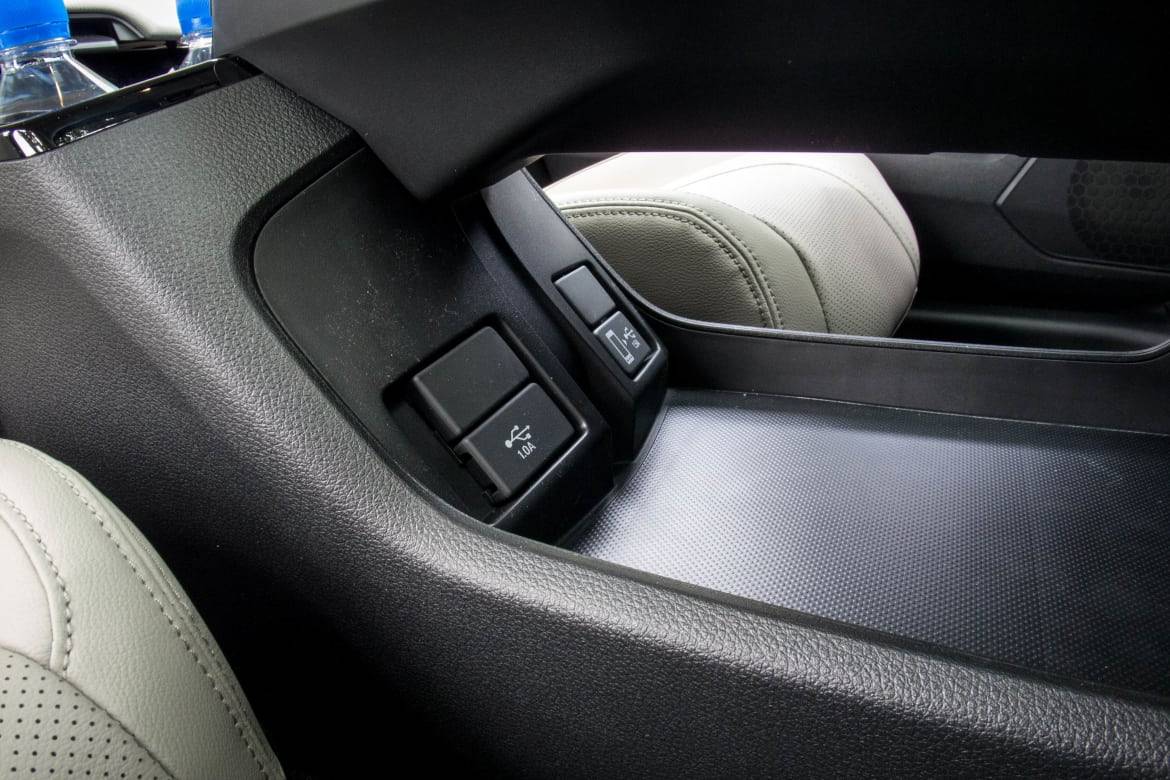
I turned on this Clarity by stepping on the brake and pressing the Start button, a change from Honda’s previous-generation fuel-cell car, called the FCX Clarity, which I tested 10 years ago. That one had a two-step start process and a joystick-style gear selector similar to how the Toyota Prius operates (technically a direction selector, as there are no selectable gears). This joyless stick is unquestionably an outdated irritant that has made way for a more modern irritant: Honda’s now familiar, and dreadful, multibutton transmission controls. Woohoo, progress….
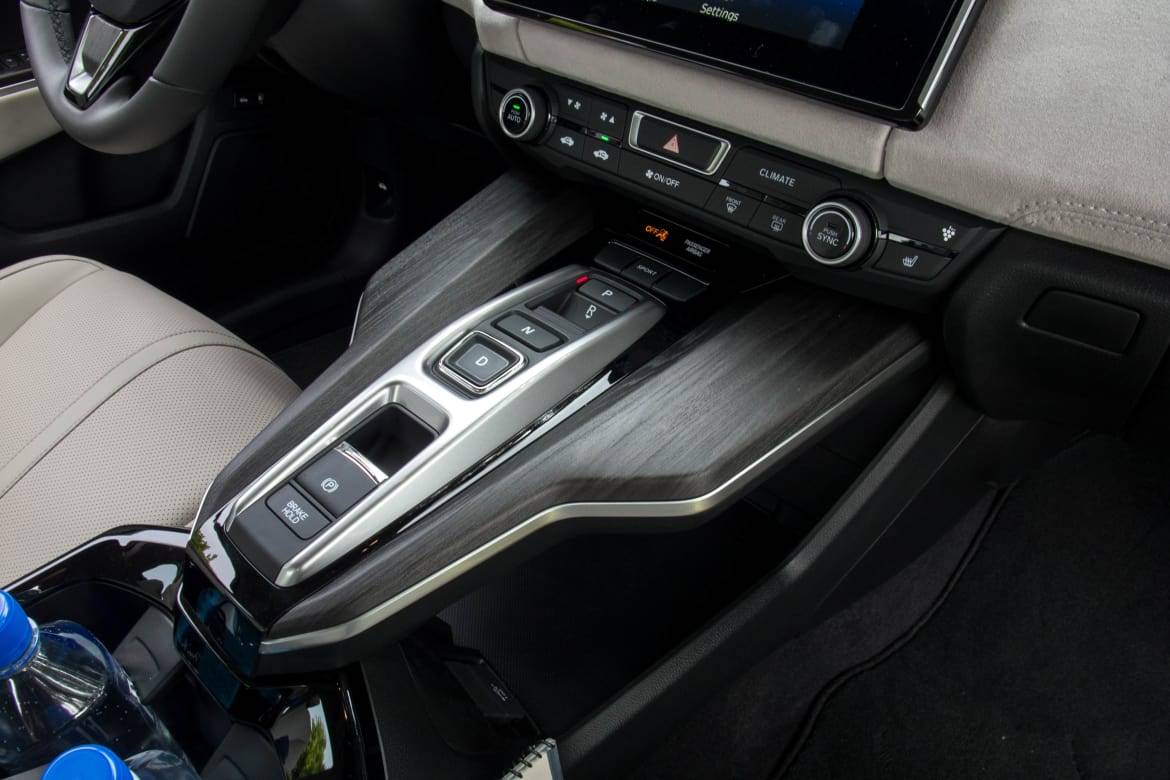
The type of real car the Clarity Fuel Cell resembles is a battery-electric because that’s essentially what it is. An electric motor drives the front wheels using electricity supplied by a fuel cell that combines hydrogen gas from onboard tanks with oxygen from the atmosphere.
If it sounds exotic, it’s not too different from batteries, which are also electro-chemical. It’s all about the flow of electrons, the only difference being that the electrons are forced to one pole in a battery by applying electricity (charging), and then they flow back to the opposite pole, creating the current. In an automotive fuel cell, a platinum catalyst material separates electrons from hydrogen atoms that can then pass through a microscopically porous membrane; the electrons don’t fit through the membrane and have to run around a different path to reunite with the positively charged hydrogen atoms, then the oxygen. Those flowing electrons provide the electric current. So long as you keep supplying hydrogen and oxygen, it keeps providing the juice.
The component is called a fuel-cell stack because it has many cells — just like a battery does. If you want to know more, I recommend this Honda video — even though it’s from the FCX era rather than the new Clarity — because its graphics are more illustrative and it’s light on the creepy children and floating heads (I warned you).
Once on, the car remains silent like an EV, and stepping on the accelerator provides an immediate, satisfying launch. You hear a slight high-pitched whistle or whine that sounds like an electric motor but is likely the compressor, which forces air into the fuel-cell stack to react with the hydrogen. Unlike the FCX, which used a compressor like a roots-type supercharger, the new car employs an electric turbocharger that makes it quieter than the FCX — and the Toyota Mirai fuel-cell car, for that matter.
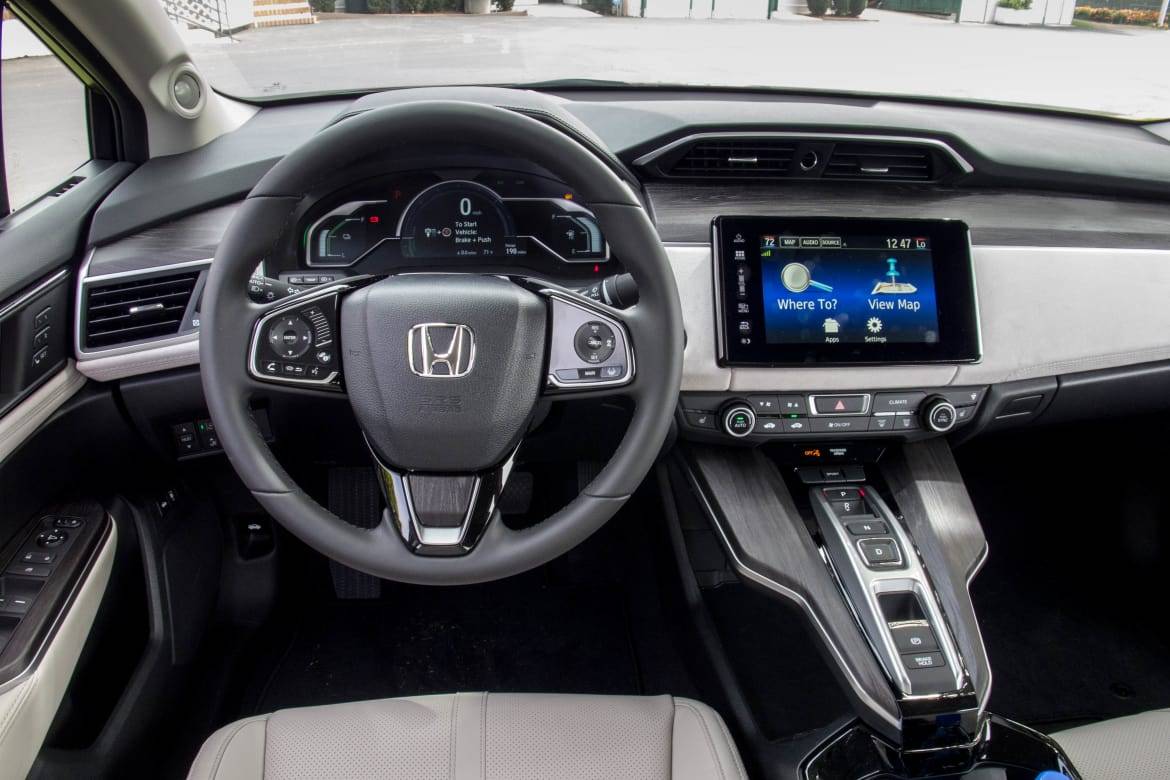
To that end, though I haven’t put as many miles on the Mirai, I prefer the Clarity driving experience. Though the specs say the Honda’s heavier, the drive motor is more powerful and it doesn’t seem to run out of steam once it gets going. (Coincidentally, steam is the only tailpipe emission, as the H2O and heat depart the fuel cell, but I’m getting off track.) The Mirai also feels less connected overall, where the Clarity’s steering is superior and its handling engaging. As is so often true with efficiency-oriented cars, the tires are the weak link: The car corners flat, but traction could be better.
The brake pedal also has a good feel that’s better than the Mirai’s — impressive for a car with blended regenerative braking. Like electrics and hybrids, the Clarity recaptures some energy when braking or coasting, which requires it to have a small lithium-ion battery pack for storage — otherwise the energy would be wasted. A gauge on the left of the instrument panel shows its state of charge, and during a long downhill run, it indeed topped off.

One complaint is that the only way to get motor braking when descending a steep hill is to turn on the Sport mode, which increases the regeneration effect. It does the job, but Sport mode also makes the accelerator pedal more sensitive and twitchy. In this car, you can do what we’re taught not to do in normal cars and ride the brakes down a hill because here it triggers regeneration — but I’d always be concerned about heating up the brake pads, too, because there’s no indication when they’ve come into play. A downhill mode or momentary braking paddle like Chevrolet uses on its EVs’ steering wheels would be a nice addition.
The Clarity Fuel Cell recalls the Accord mid-size sedan in its external and cabin sizes. It even looks a bit like the Accord but for the subtle rear fender skirts, which aid aerodynamics. Likewise for the vents low on the rear doors, which take in air and channel it across the face of the rear wheels — the first application for rear wheels of this increasingly popular air-curtain design.
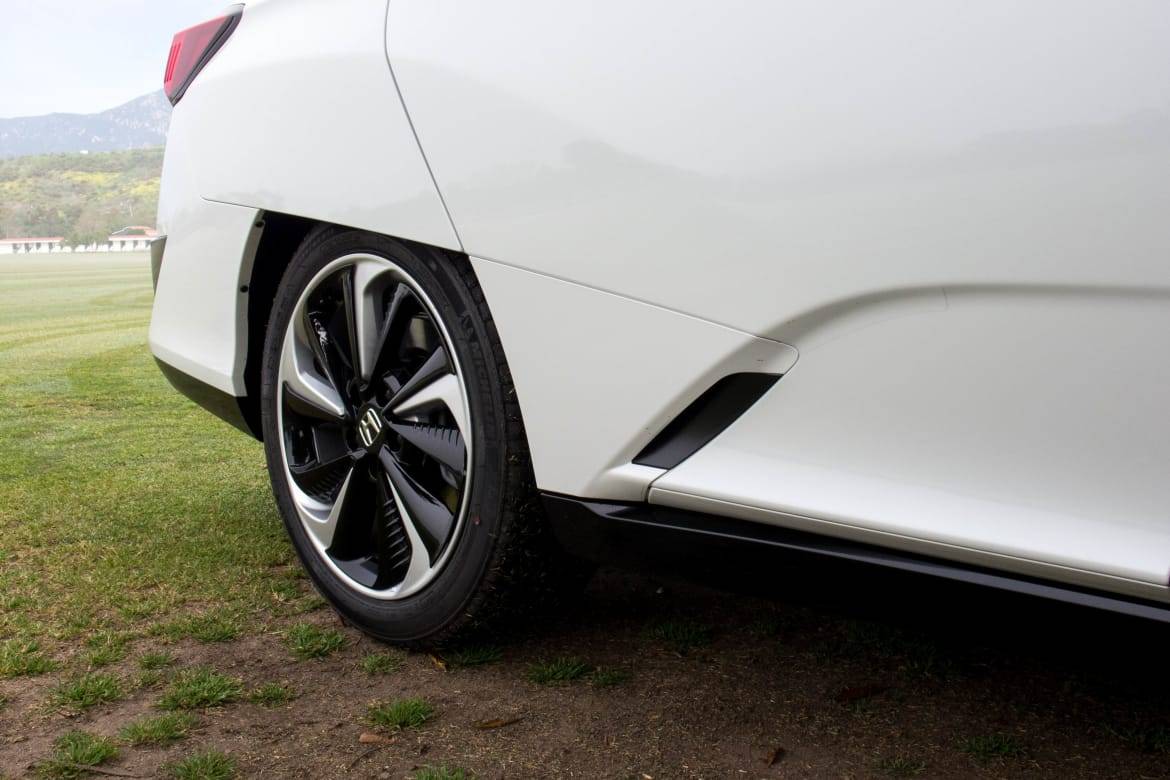
The interior is nice and roomy front and back, too, aided by the introduction of a horizontally oriented fuel-cell stack that fits under the hood rather than running through the center of the cabin and preventing a center rear seat as it did in the FCX. The lack of a lumbar adjustment for the Clarity’s driver seems an oversight, but the seats were comfortable — more so than the Mirai’s, even with its lumbar adjustment. The Mirai is a four-seater.
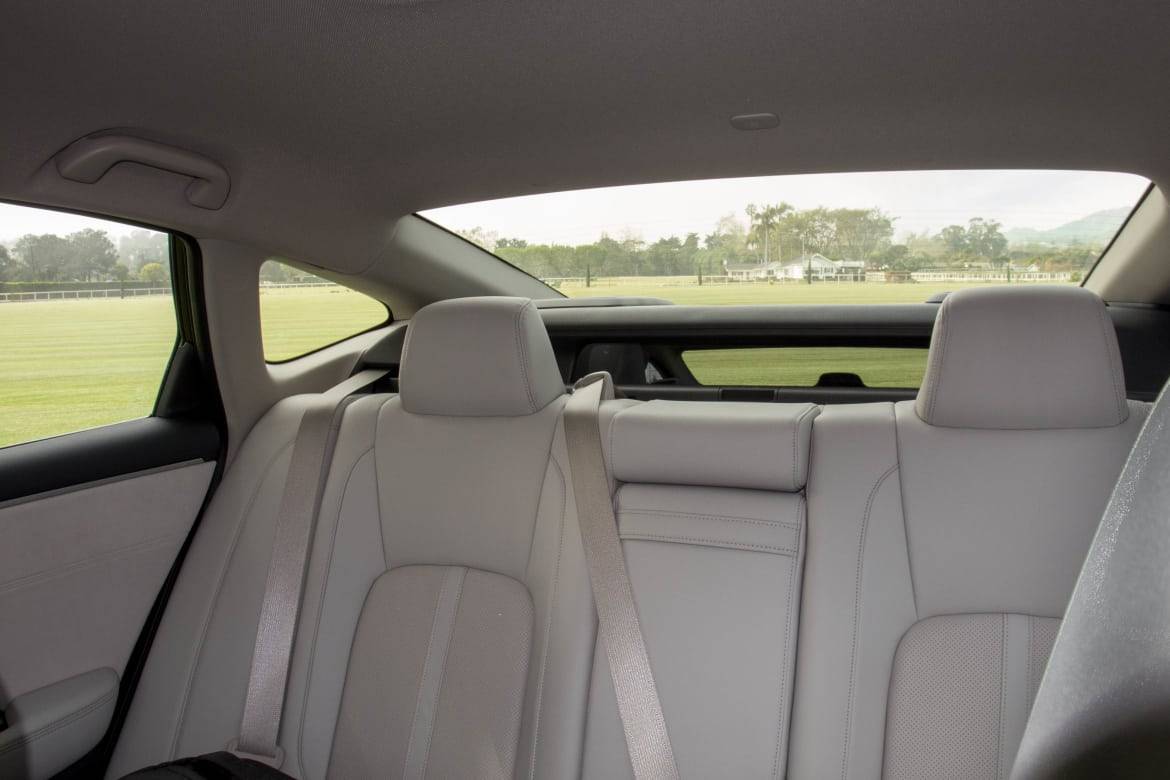
The Clarity has the kind of split rear window Toyota avoided with the Mirai, but there’s a twist: Below the main rear window is a small pane that looks into… the trunk. Fortunately, there’s another little window on the back of the trunk lid so you can see all the way through, and it does give you better low visibility to the rear than does the Mirai — unless the trunk is full.
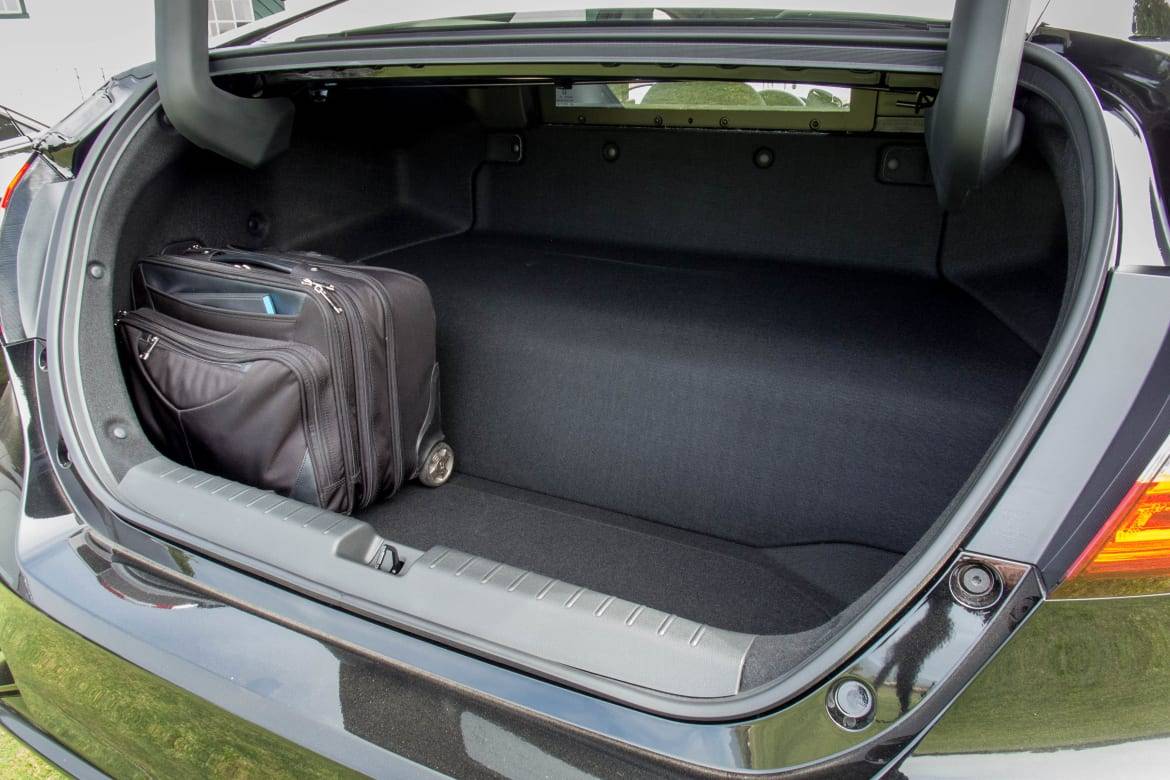
The trunk, unfortunately, is perhaps the biggest shortcoming. Even though Honda went from one hydrogen tank in the FCX to two here, reducing its encroachment on the cargo area, the trunk still offers only 11.8 cubic feet — workable, but not close to the Civic sedan’s 15.1 cubic feet, and much less the Accord’s 15.8 cubic feet. Unlike gasoline tanks that can be molded to fit into oddly shaped spaces, today’s high-pressure hydrogen tanks must remain cylindrical. They just aren’t very packaging-friendly.
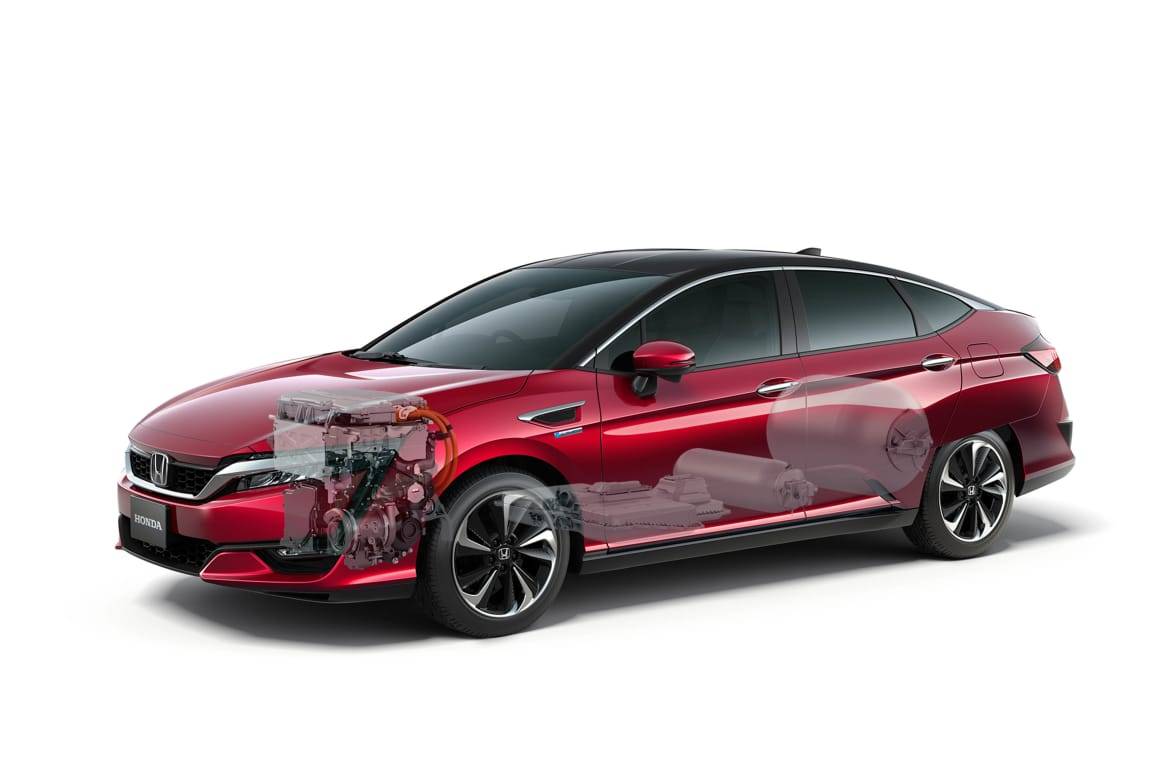
So, here’s the big question about the Clarity and fuel cells in general: Why? The answer — if you accept the notion that we need cars that don’t burn fossil fuels — is range and refueling time. Affordable electric cars have come a long way, but their range still tops out at less than 250 miles (Chevrolet Bolt EV) and refueling at home takes four to eight hours. Yes, quick charging may be an option, but quick means 30 minutes to get an empty EV battery — at best — to 80 percent of its capacity. Refueling a Clarity takes about five minutes, resulting in an estimated 366 miles of range. I was going to describe the process, but it’s so much like gas refueling that there’s no need. The difference is that the car has a male fitting to which the female pump latches, and the car and pump communicate with each other as a safeguard against leaks.
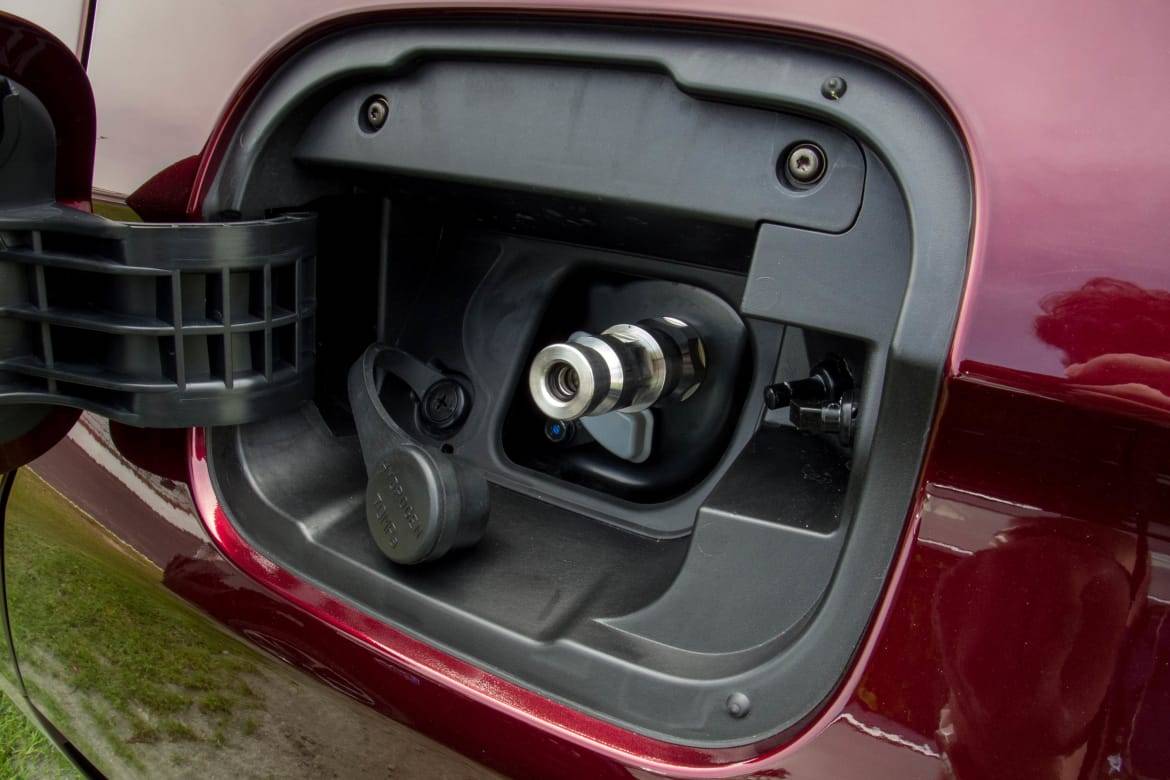
As of publication, Honda had delivered almost 100 Clarity Fuel Cells and hundreds of buyers are on waiting lists. It’s easy to see why: Where the FCX models were leased for about $600 per month, the Clarity Fuel Cell is just $369 per month for 36 months after $2,868 down. There’s more: The annual mileage limit is a generous 20,000 miles, lessees get 21 days of in-state luxury car rental (in case they want to leave the refueling area, for example) and a $15,000 (yes, that’s 15 and three zeroes) fuel allowance. That should take the sting out of the fuel costs, which run 2.5 times as much as regular gas per mile, comparing the Clarity with the four-cylinder Accord. And then California state will allow the car in high-occupancy-vehicle lanes and throw a $5,000 rebate at you. Who wouldn’t want this car?
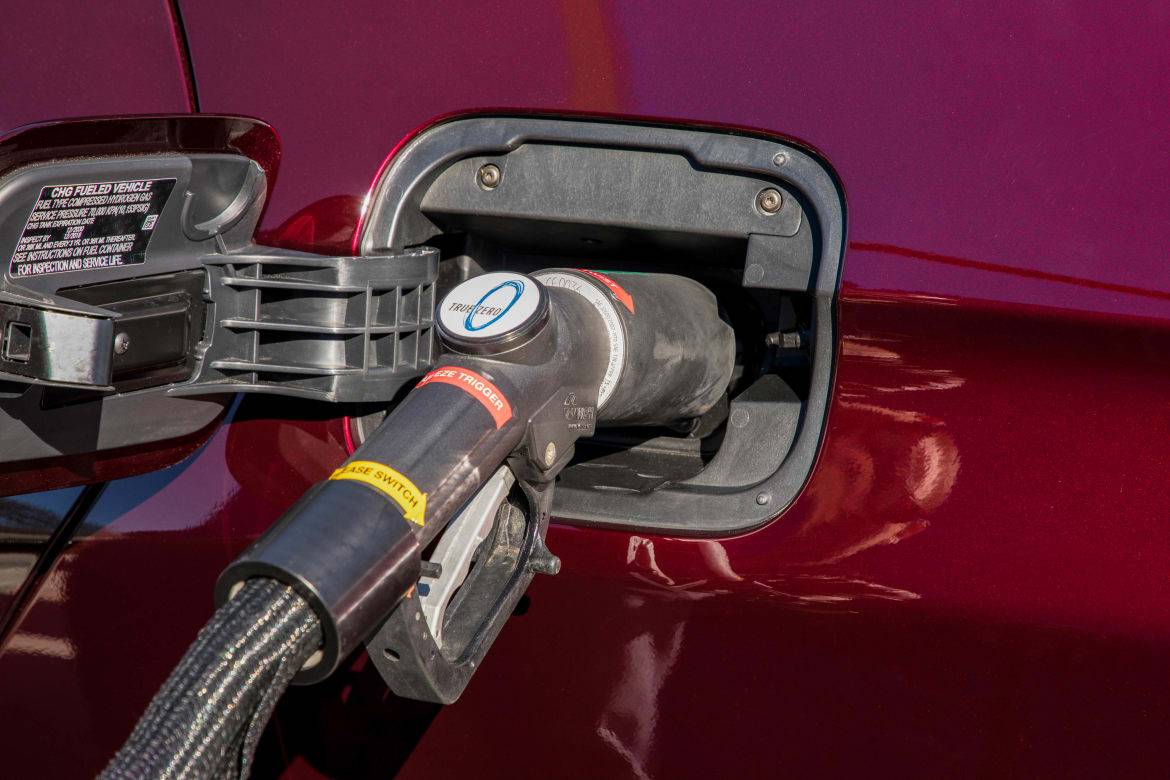
Oh, right, someone who’s not near a hydrogen station. Though automakers like Honda and Toyota are helping to fund their proliferation, the shortage of stations is certainly the greatest limiting factor. And the timing is terrible: Gas prices have been too low for too long to stoke demand on economic grounds, and regardless of your politics, the fact that the Trump administration is set to cut EPA funding is just that — a fact. It suggests less interest in supporting the stations, cars and incentives meant to jump-start alternative-fuel vehicle sales. (On the flip side, Honda and Toyota are members of the Alliance of Automobile Manufacturers that lobbied the Administration, successfully, for a review of fuel economy standards. Win some, potentially lose some.)
That means the appeal is left to technophiles and the environmentally conscious. Hydrogen isn’t a fuel; it’s a means of storing and transporting energy, but it can be created through electrolysis to crack hydrogen from oxygen in water, and it can be reformed from hydrocarbons, the most popular and clean of which is natural gas. But it’s the fact that hydrogen can be made with renewable sources of electricity that give it the same appeal as battery EVs to environmentalists. If ever gas prices go up and stay up and Americans want long-range electric mobility, at least we know Honda has a real car.

Former Executive Editor Joe Wiesenfelder, a Cars.com launch veteran, led the car evaluation effort. He owns a 1984 Mercedes 300D and a 2002 Mazda Miata SE.
Featured stories




